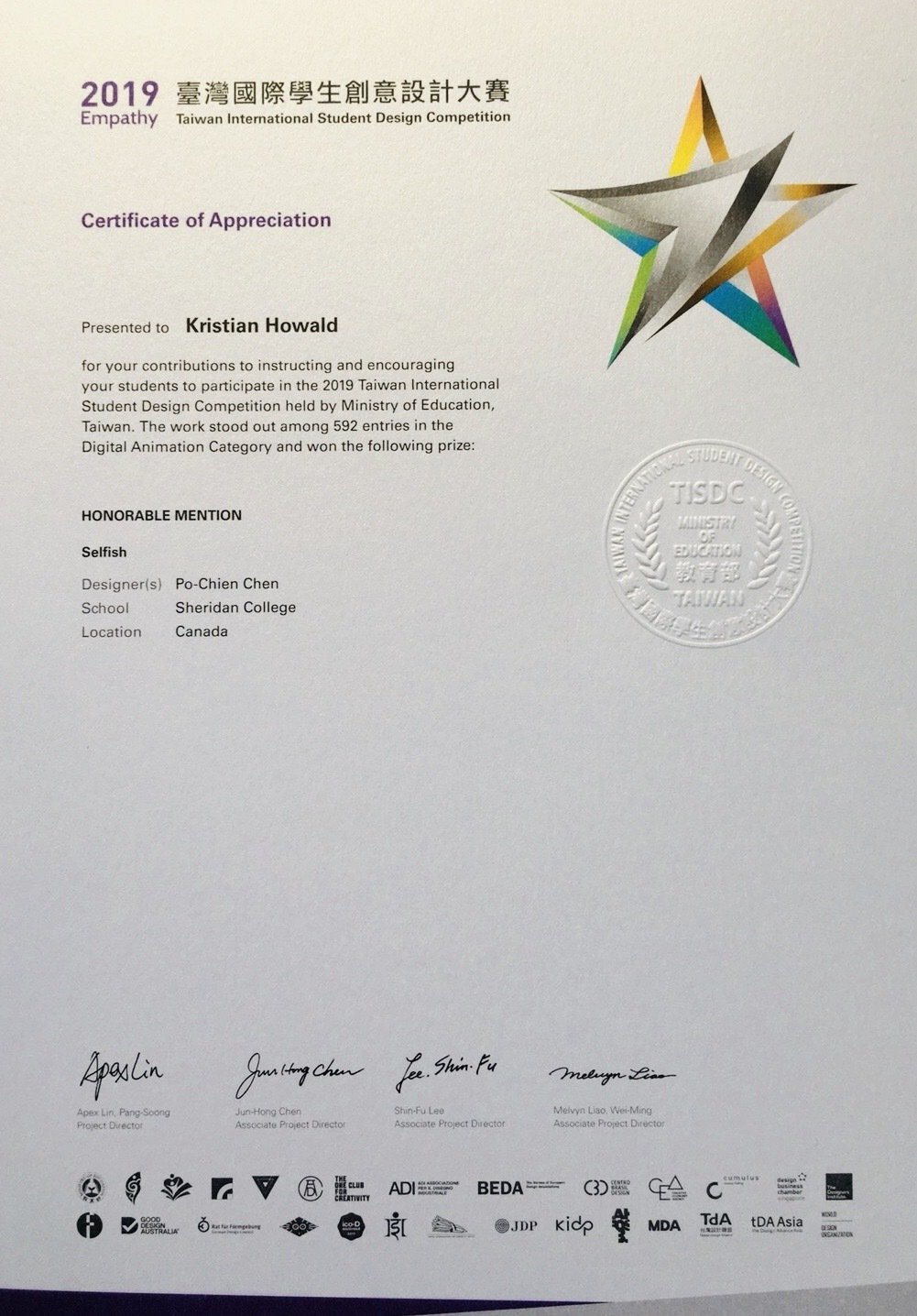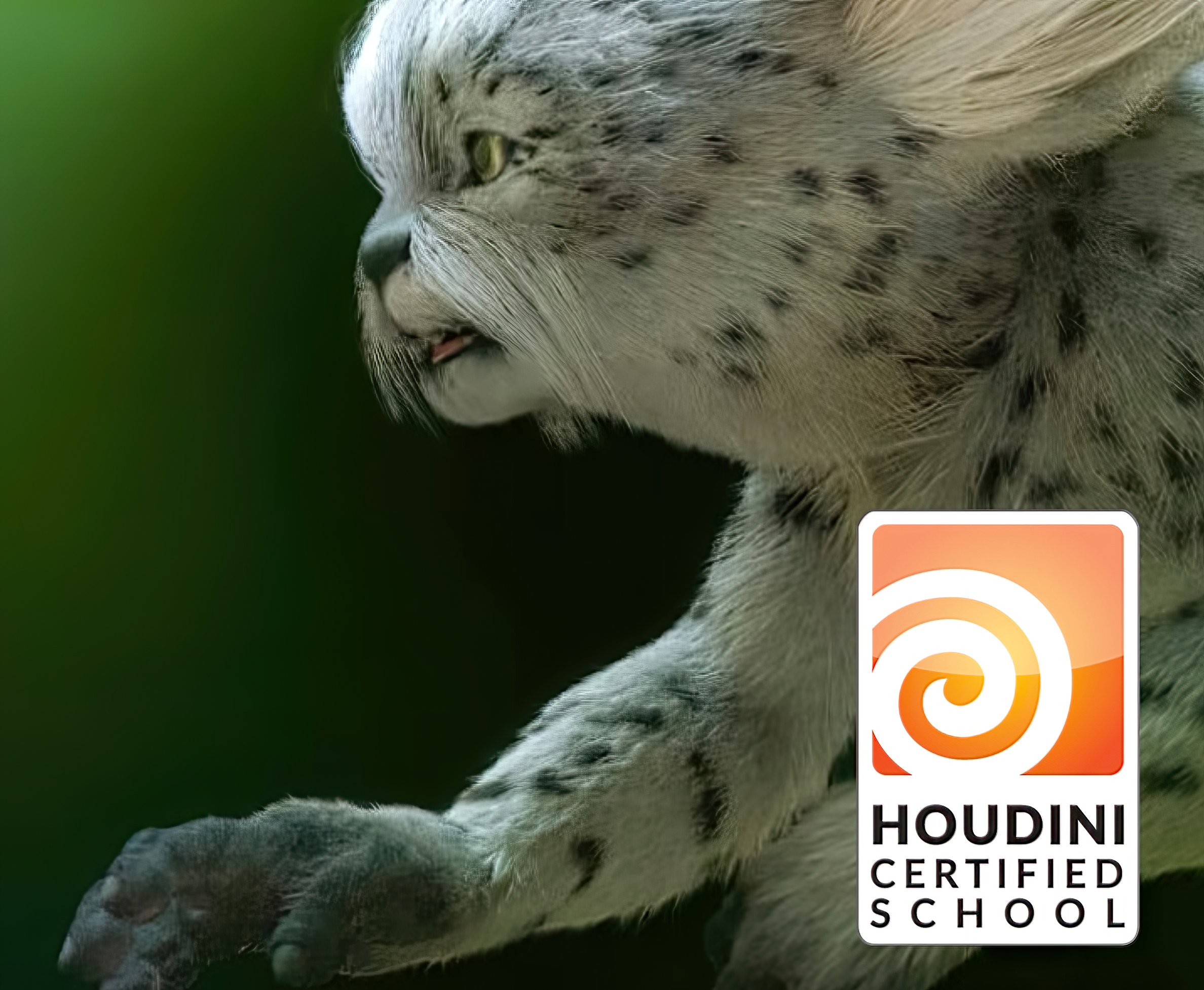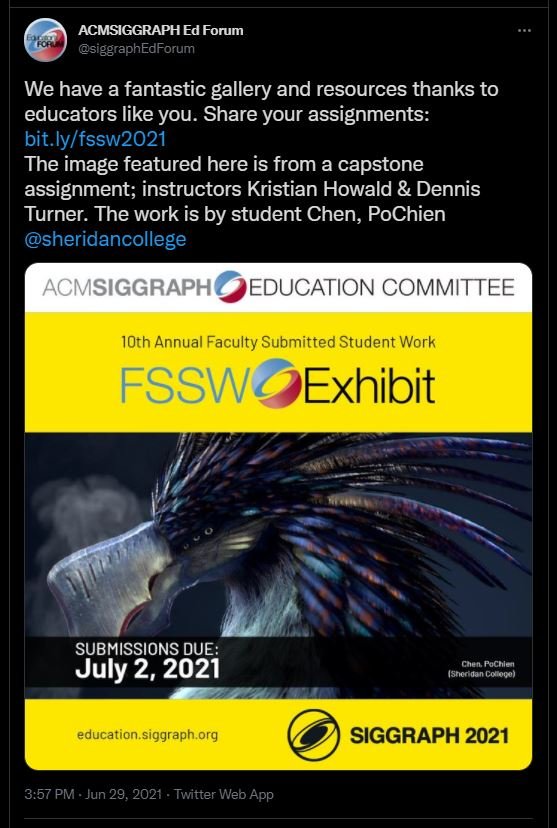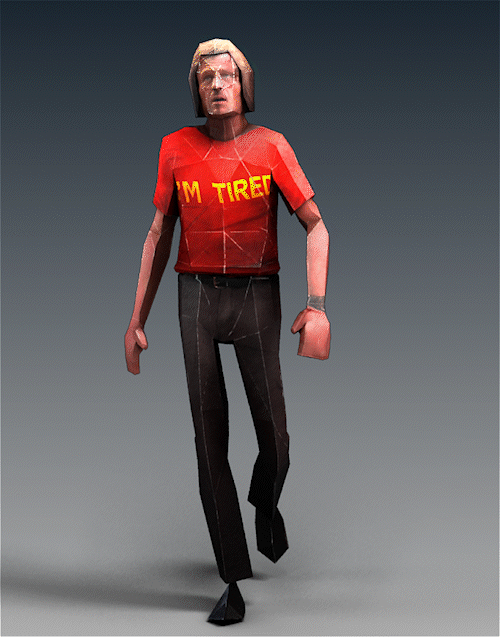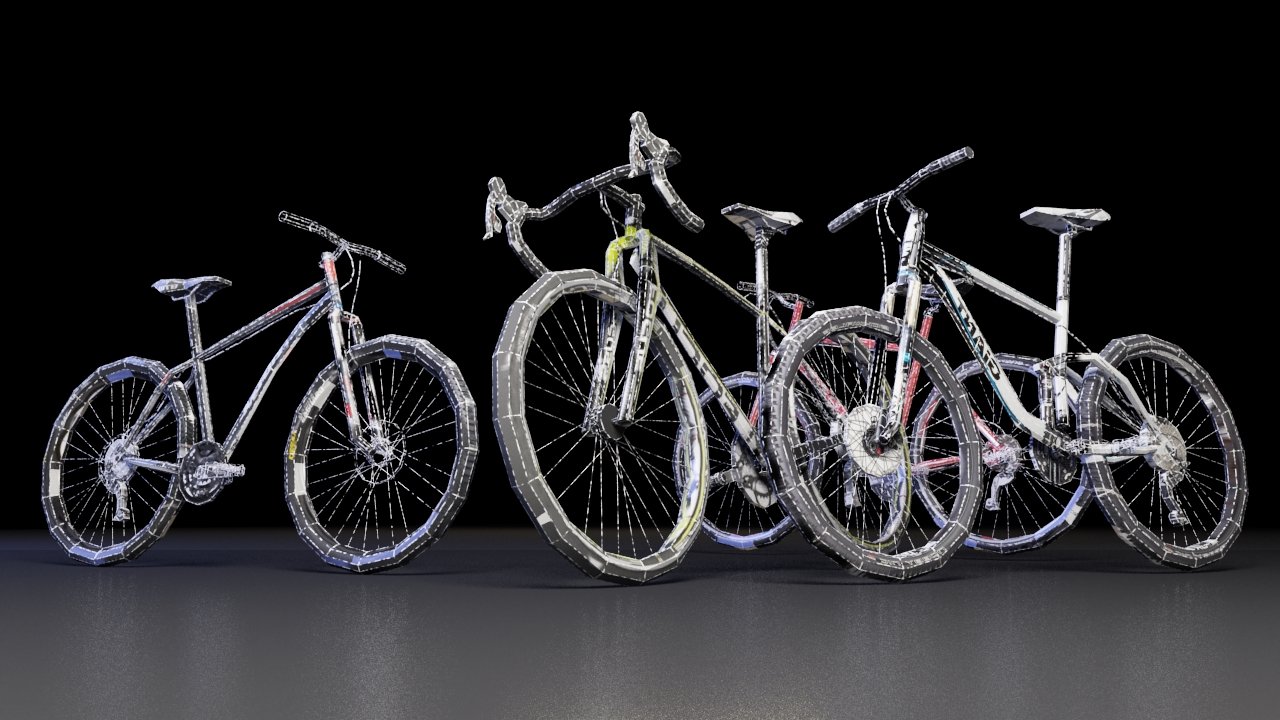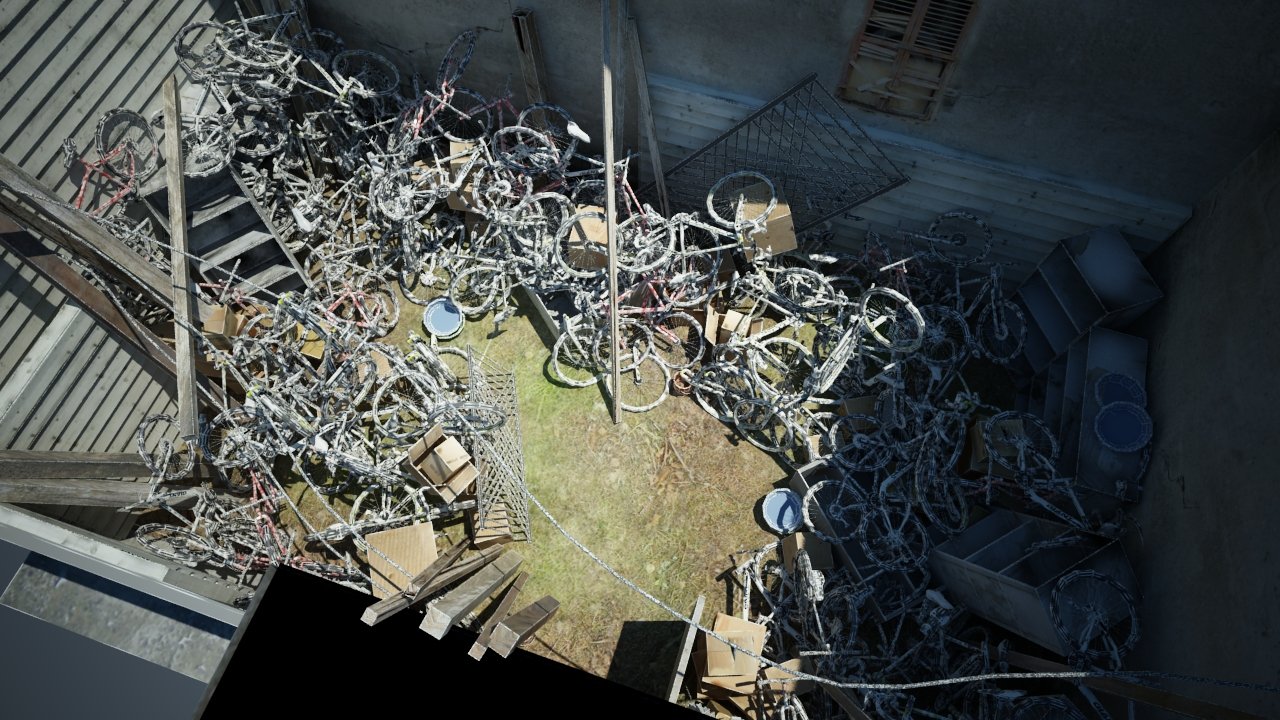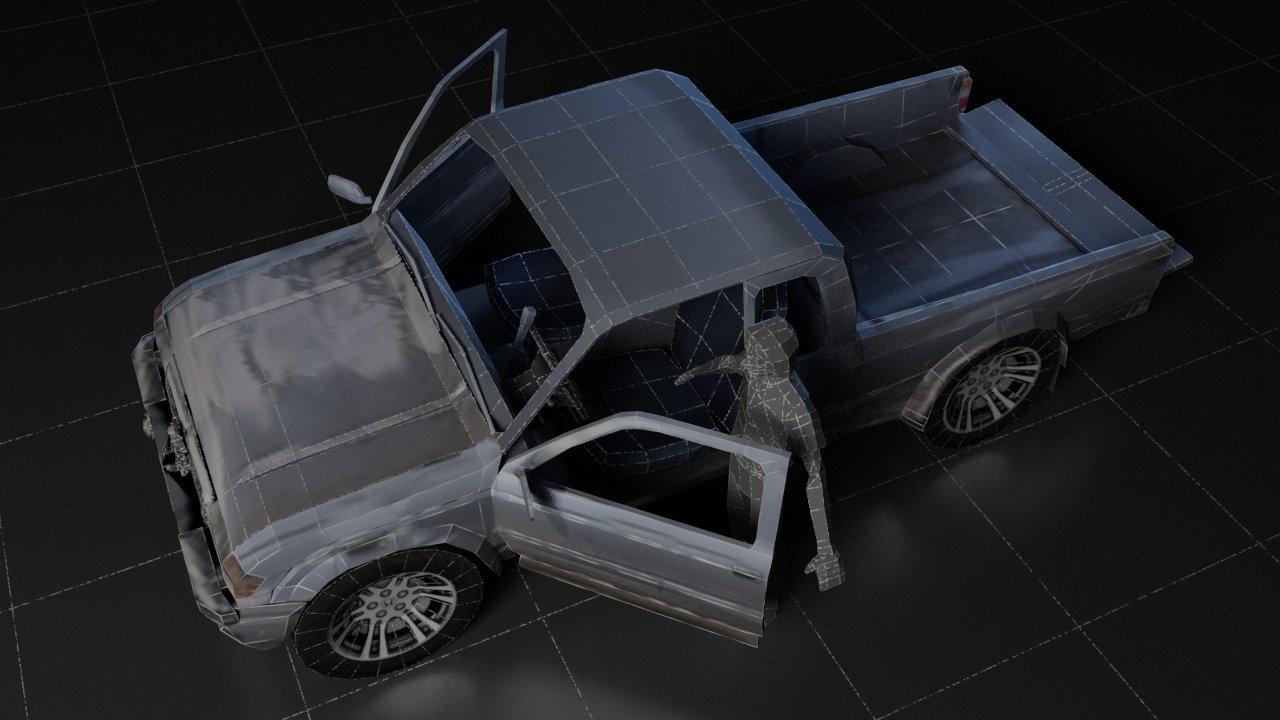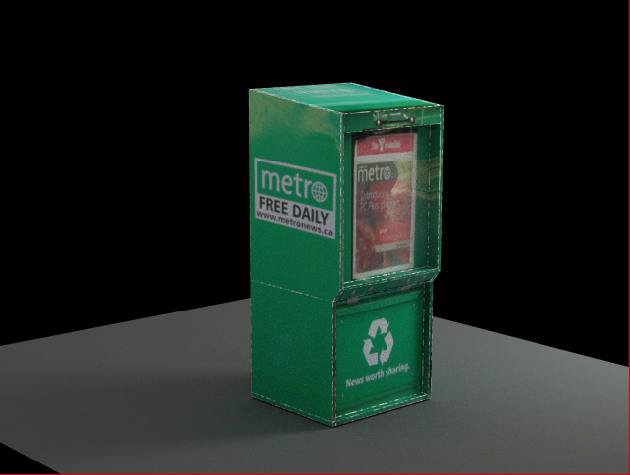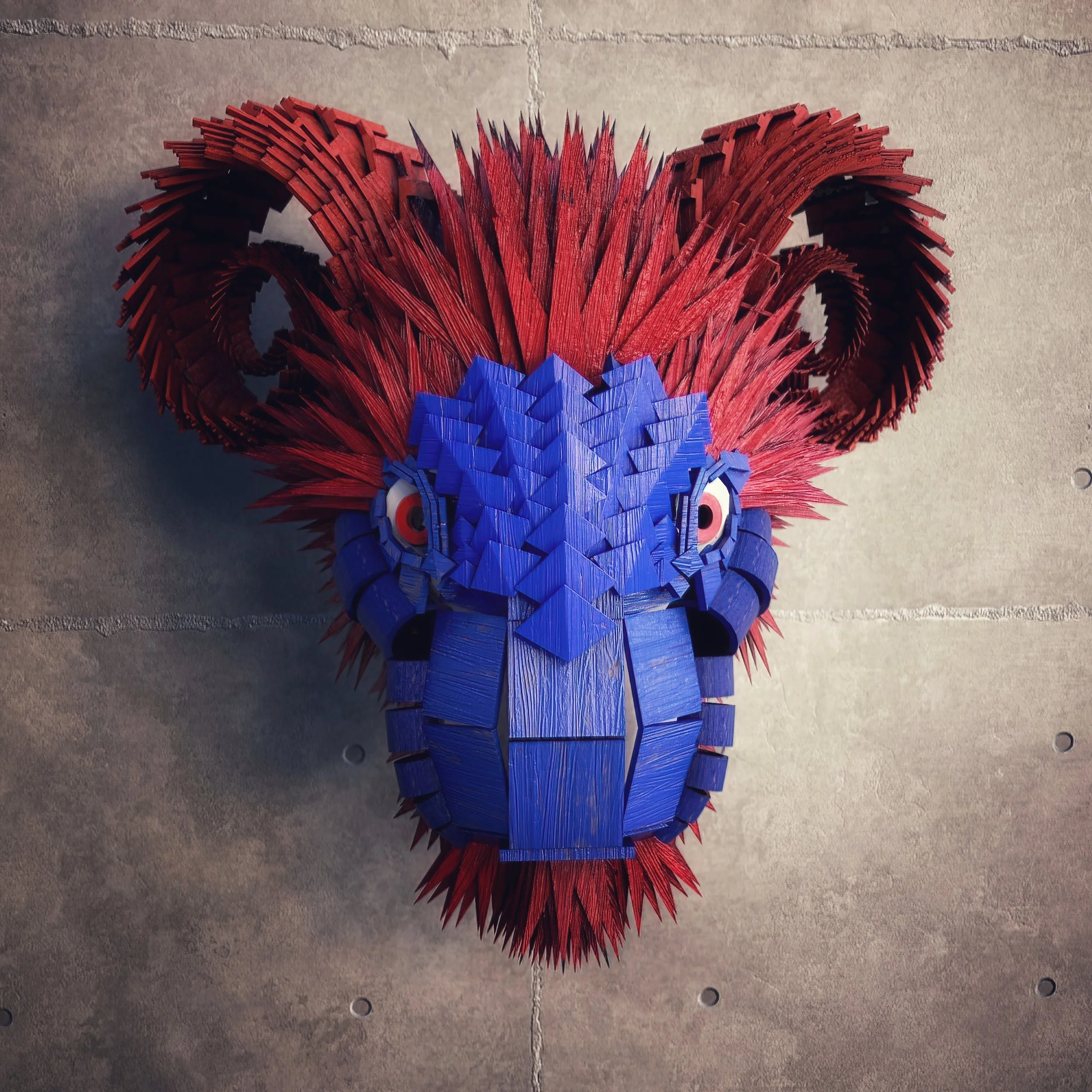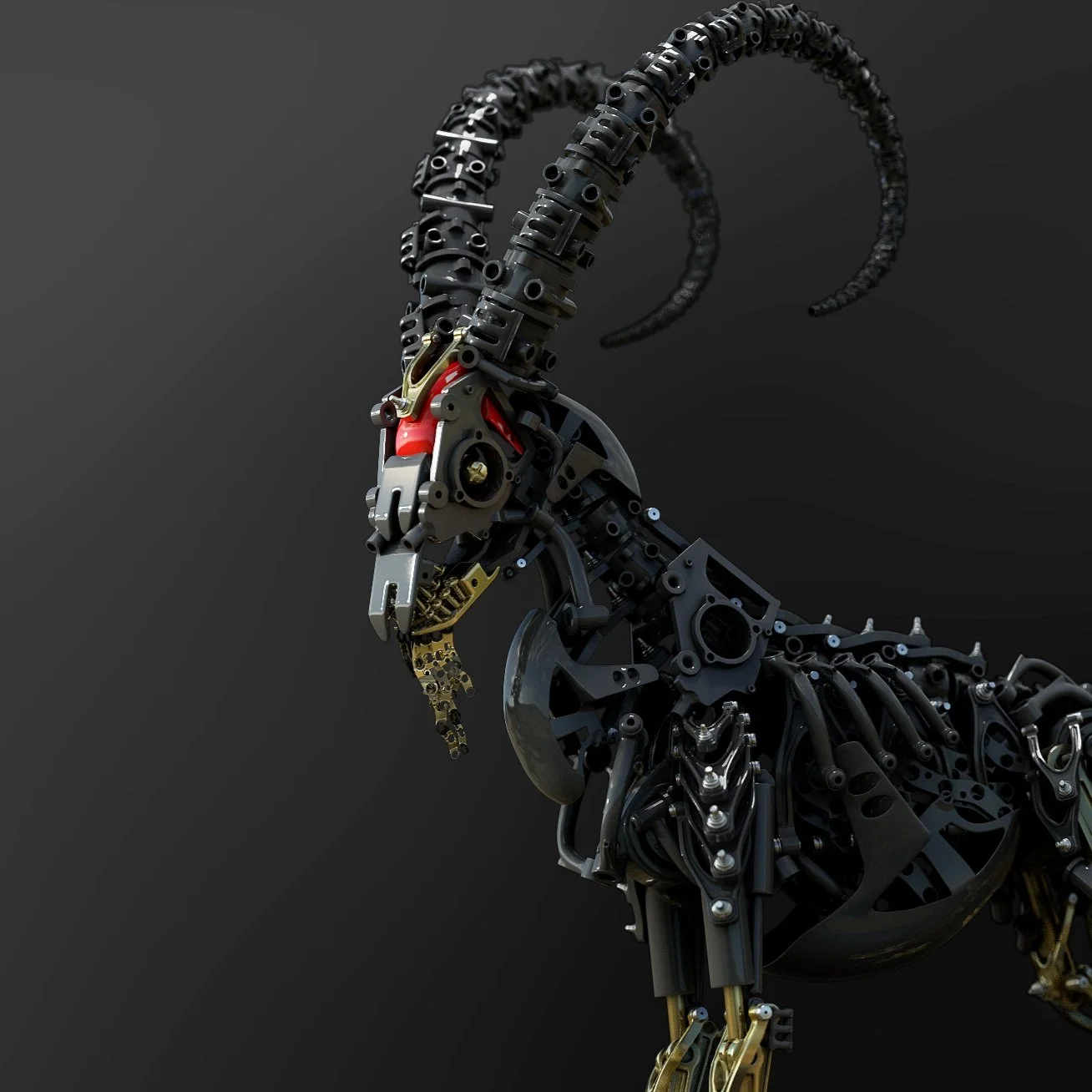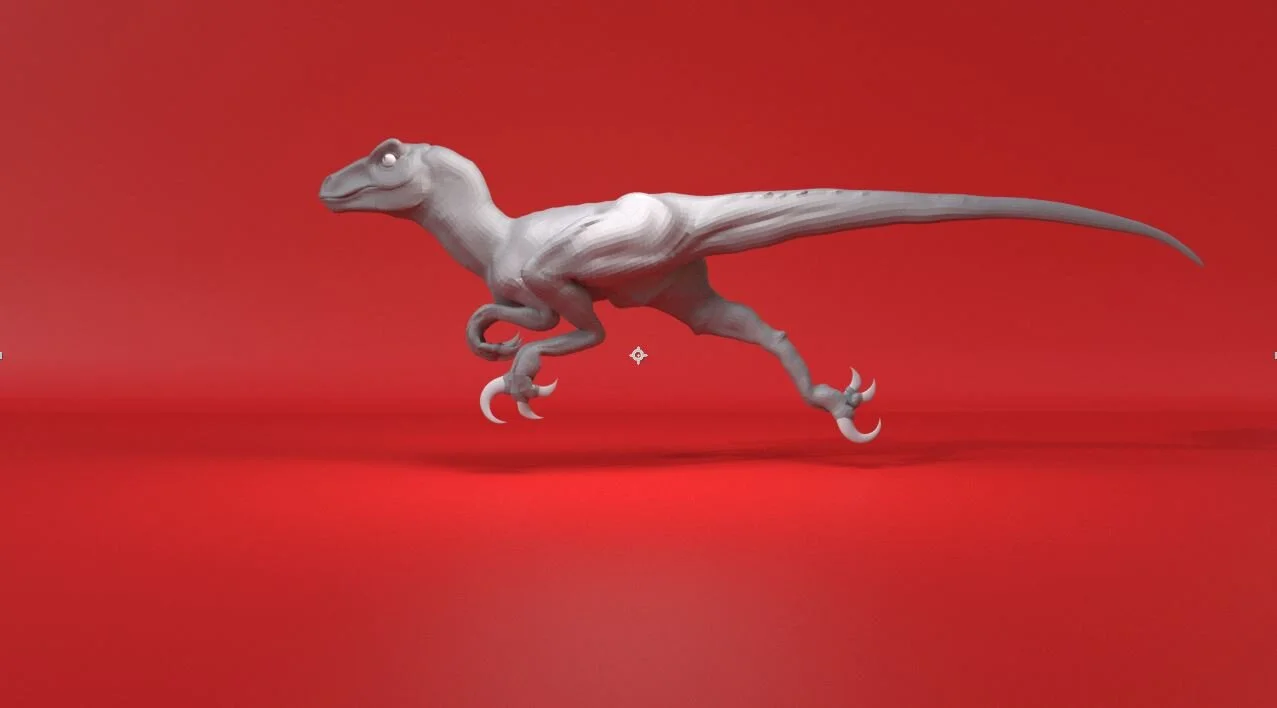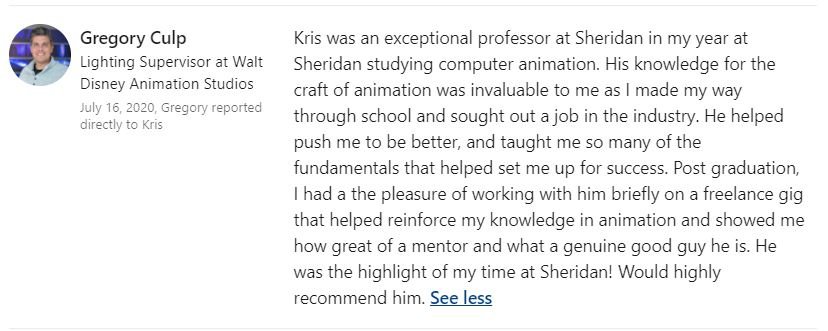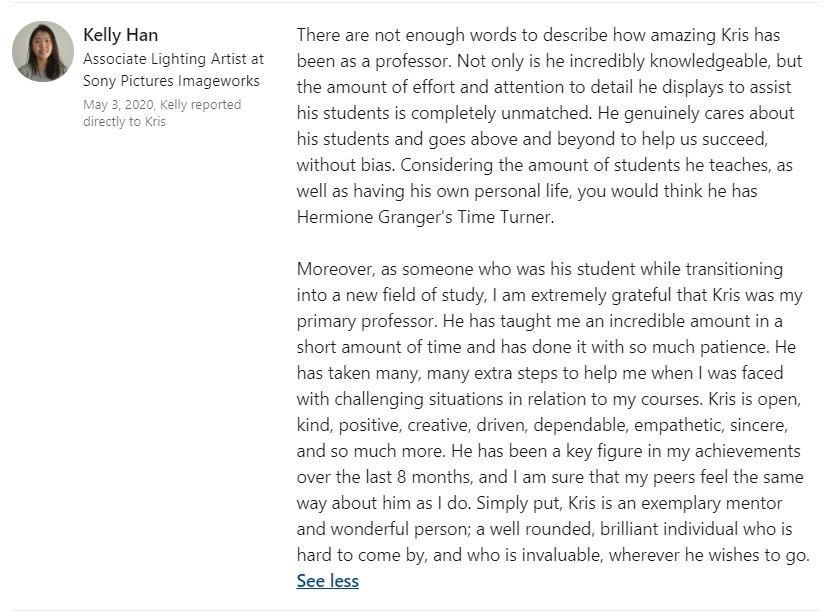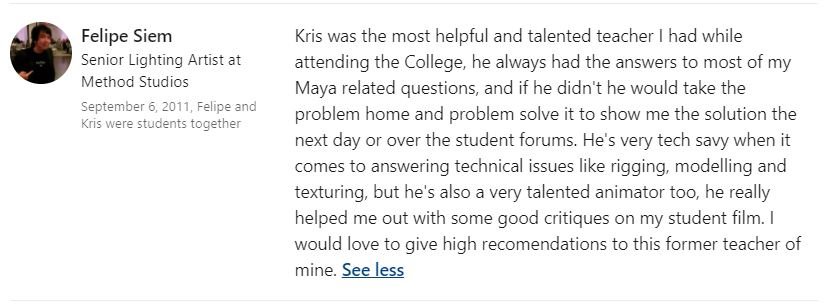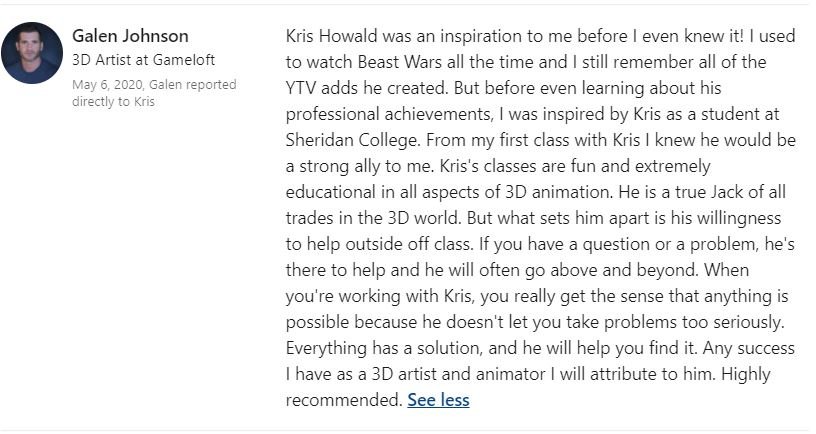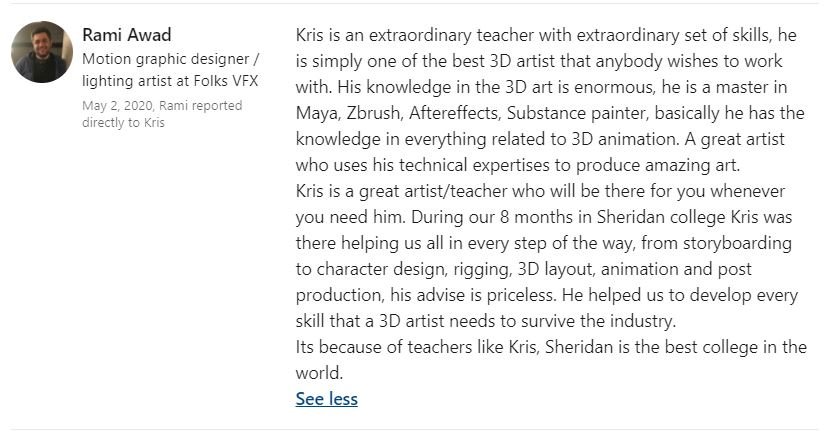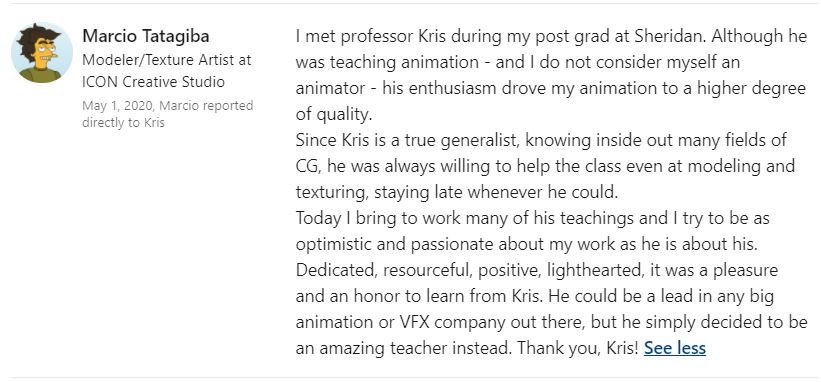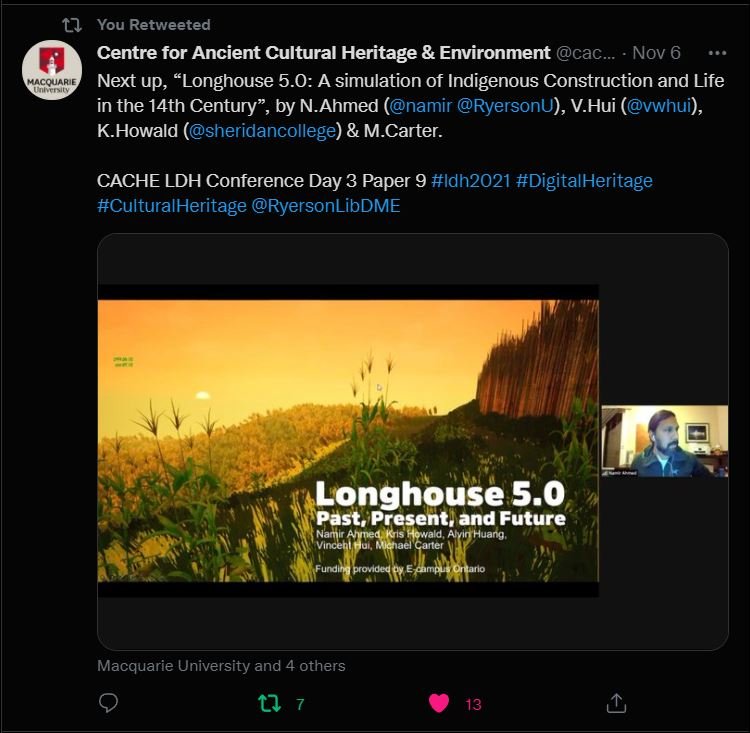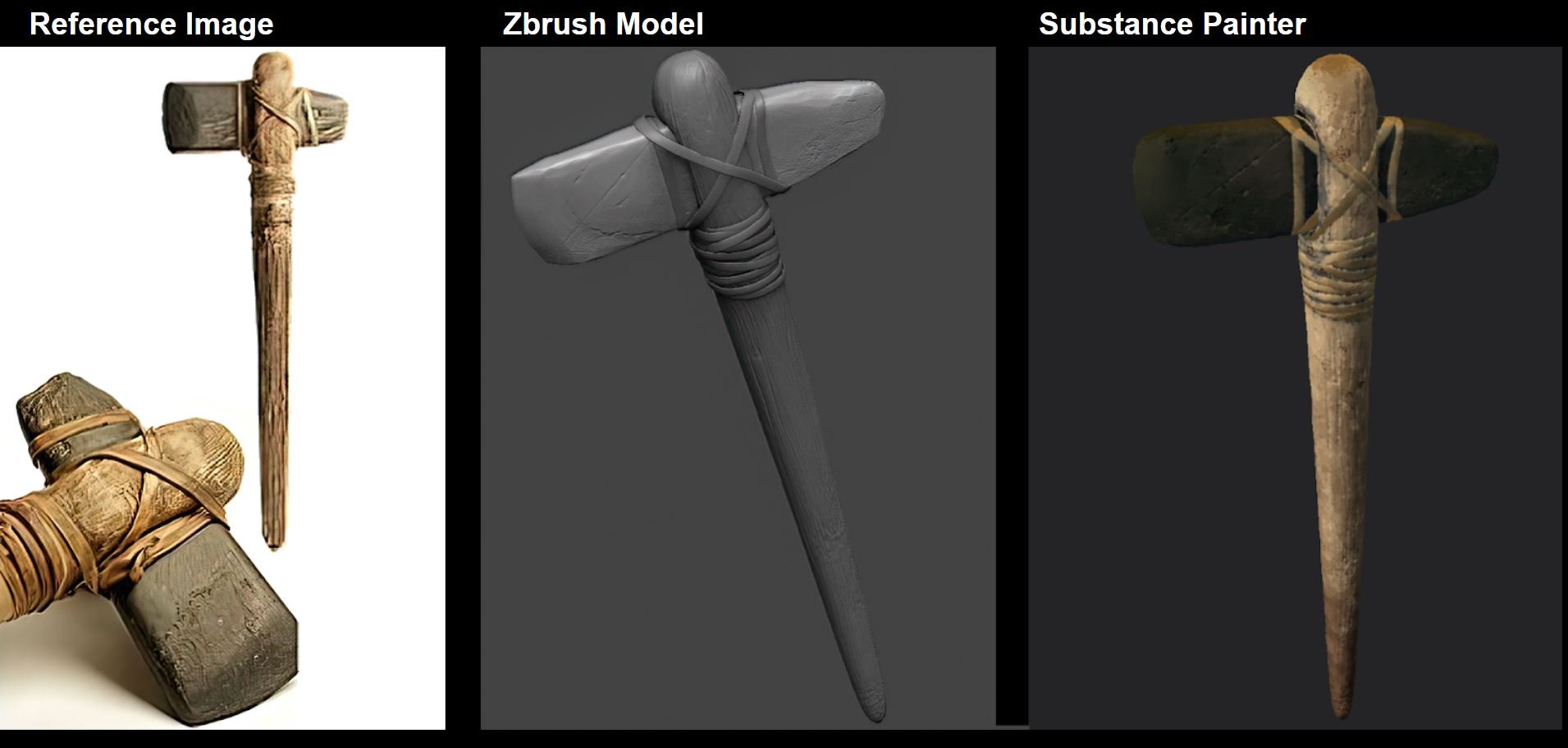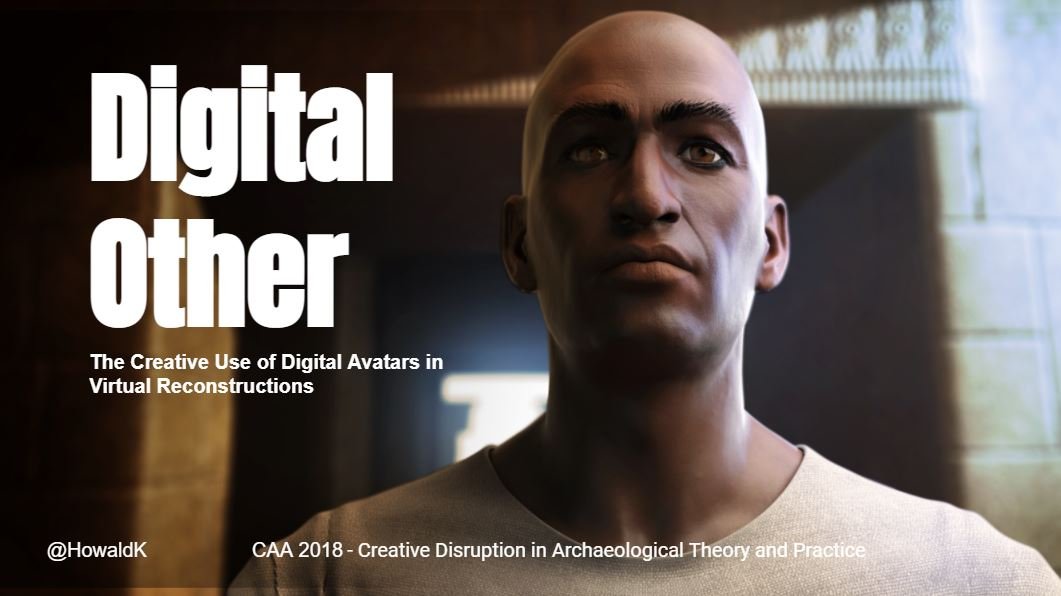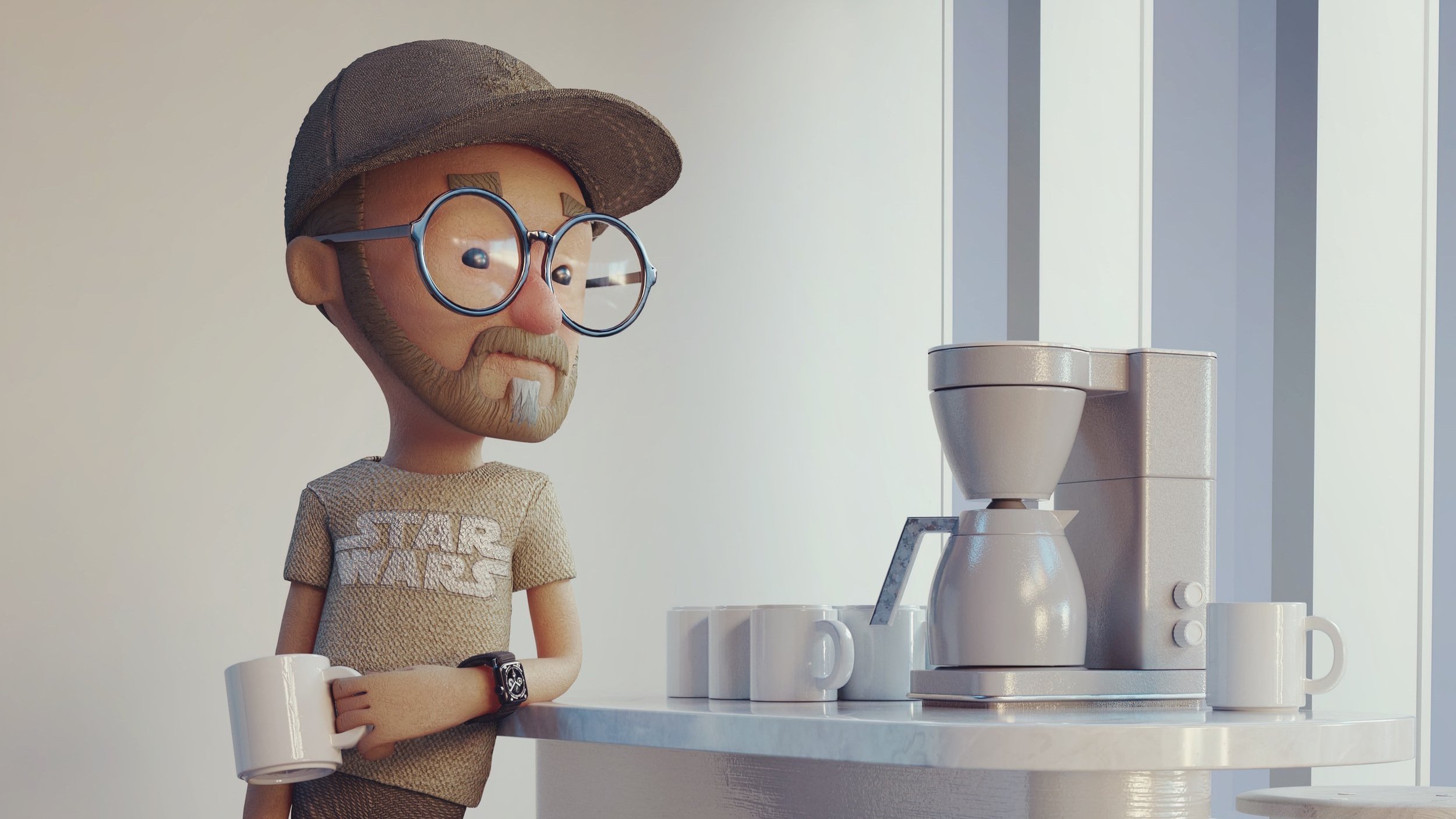
“The opportunity to continuously meet new people has become a mosaic of inspiration for me.”
Philosophy of Facilitation:
There’s undeniably a lot of content to cover when it comes to Computer Animation. I strive to create a positive, energetic, creative, and inquisitive learning environment that takes complex and sometimes abstract theories and makes them easy to understand. I’m there to give students the tools they need to achieve their goals on a technical level and advise them creatively so that the work they produce exceeds their expectations.
The graduating class of 2019
My students come from all over the world, with unique cultural backgrounds. This multivocal quality creates an imagination engine that produces diverse projects with visual and written narratives. These varied viewpoints lend to vibrant discussions and collaborations amongst the students. The opportunity to continuously meet new people has become a mosaic of inspiration for me. They are a driving factor for my creativity and innovation in the classroom, and the source of my growth (beyond what I couldn’t have imagined) as an educator and digital artist.
This award for Empathy was a welcomed surprise, from the 2019 Taiwan International Student Design Competition.
I lead students through the process, from their first day of class to their last. Timelines, rubrics, and due dates are carefully explained in great detail to avoid confusion as to what is expected. My availability has become a source of pride for me. I aspire to give everyone personalized help throughout the year. I do this by answering any questions inside the classroom, during office hours, in pop-up drop-in sessions for small groups, or from home through various methods (most commonly in chat and video conferencing in apps like Microsoft Teams). Committed to diversity and cultural intelligence I guide the students towards cultivating a healthy work ethic. This includes respecting and helping their peers, expanding their problem-solving capabilities, and striving to be curious. These are values I hold dear, and skills that will help students succeed personally and professionally after they leave the program.
Mentorship
“Kris is a highly respected professor/mentor who always helps his students excel. He humbly shares his well-organized and well-structured materials for the class lectures with colleagues to boost the prep work, allowing a smooth transition and quality lectures even if the curriculum changes. He also willingly takes suggestions from peers to make the curriculum better for students’ learning outcomes. It had been my pleasure to team up with Kris and teach students together.”
— Seunghoon "Tony" Yeom, Instructor, Animation Design
“Kris is a creative genius with exceptional art skills and technical knowledge in the CG industry, all the way from pre-production to post-production. I have worked alongside Kris for close to 3 years now. He not only excels at delivering high-quality education, but he also keeps up with new tools and software, as I’ve seen. Also, as a former student of Kris’s, I have firsthand knowledge of his extraordinary teaching methods, which have helped me throughout my time as a student and beyond. Kris’s experience, ambition, and optimistic attitude are often a source of encouragement for students and other professors. I have only optimistic predictions for his career trajectory. See less”
— Dhruv Joshi, Former Instructor, Animation Methodology 1 and 2
I enjoy being a mentor to both students and faculty. For students, mentorship centres around advice on many different issues: some being technical, about life experiences, discussing the industry, or what jobs they should pursue. I also try to be a mentor to my peers. When I started at Sheridan in 2002, I was fortunate to be part of a tight-knit department staffed by seasoned instructors with decades of experience: Jim Sayers, Mark Simon, Richard Cohen, and our technician Ken Walker. It was excellent on-the-job training from colleagues who were respectful, intelligent, personable, reflective, and experts with the content. Jim went out of his way to make sure I was prepared to head into the classroom by sharing anecdotal advice, outlines, and other resources. I strive to do the same for any new addition to our department, whether full-time faculty or part-time instructor. It’s particularly rewarding when mentorship turns to collaboration, and there is a push to collectively make things better.
Forward-Looking
Students always comment on how much they learn in the short time we have them. On several occasions (pretty much every year), some have even suggested they’ve learned more in our 8-months than in their entire 4-year undergraduate programs. This is possible because of my constant look to the future, varied delivery methods, knowledge of the subject matter, and positive attitude towards problem-solving. There are different approaches I’ve developed and adapted over the years to help students manage all of the information that is directed their way.
Recording Classes. This has become commonplace in every classroom (particularly throughout the Pandemic). However, it’s something I implemented very early in my teaching career, where student volunteers set up a tripod and video camera to record my class sessions. Having access to my archived content allowed students to follow along in class without worrying about missing necessary steps or procedures because they could always refer back to the recordings afterwards.
Communications. The ability for students to access information quickly is paramount in this program. Before social media existed (or Slate), and there weren't a lot of online resources for communication and discussion; so I developed my own. I had set up a mini, flash-based website that had helpful tips, interactive hotkey information, and other useful Maya tips. I later implemented a dedicated wiki/forum-based website for posting coarse material, notes, useful links, but more importantly, it gave students a space to ask questions outside of the classroom in an open discussion format. The Computer Animation Program moved to more modern solutions the make these types of communication more accessible (Slate, Slack, Shotgun, and now Teams).
Collaboration. When I was at the Dingle International Animation Festival in 2018, I had a chat with a professor at Gobelins. She had talked about their renowned animation program, but what caught my attention was the animation review tool they used called Syncsketch. It is a web-based tool, developed by ex-Pixar technicians specifically for the animation industry. It gives teams the ability to do draw-overs and annotations in real-time. I tested it out on a small scale through a personal account with the Digital Creature class in 2019. When the pandemic broke out and we had to set up remotely Shotgun (our previous collaborative tool) proved to be sluggish and not up to the task. Luckily I was able to have Syncsketch implemented across all three programs.
Youtube Collection. I tend to go overboard when it comes to helping students outside of the classroom. One thing I have found particularly useful is creating tailor-made movies that answer specific questions that might not have a searchable answer online. This could be any topic or concept that comes up that poses a challenge to students on a yearly basis. This growing library of information has saved me a lot of time when similar questions arise, I can simply share the link to an easily accessible answer.
Staying Fresh. Another thing I find that contributes to a unique course is to offer new experiences each year. All of the examples I use for demonstrations are freshly designed and developed for each school year. Not recycling the same content year after year allows me to research, experiment with new tools and approaches, stay current, and most importantly, give the students a bespoke experience.
To stay up to date, I’m constantly looking over articles, attending workshops, and talking with colleagues from the industry to get a sense of what’s new and how these advances can be incorporated into future studies. In 2015, I advanced my rigging skills by taking a workshop given by Nico Sanghrajka. Nico was a Rigging Supervisor at Atomic Fiction, where he was responsible for the CG double of Deadpool and has worked in lead roles at many top-tier studios (MPC, Dreamworks, ILM, etc.). It was an informative session that inspired new techniques, which I incorporated into my classes in the following years. I automated the rigging process through scripts in 2019. This gave students who wanted to focus on animation and option to breeze past the more complicated technical workflows of setting up a character. Steve Sayer, took these scripts and refined them with his mastery of coding the following year.
Since 2006, I’ve been responsible for the majority of the software advances in the Computer Animation program.
2006. Shave and a Haircut. This hair plug-in was developed at ILM by Joe Alter. I introduced it as a way of familiarizing students with the grooming process. It also gave students options for adding complexity into their scenes like grass (or any other object that could be instanced along the hair strands). Unfortunately, Shave couldn’t keep up with the Maya releases, and we had to abandon it almost 10 years ago. We still haven’t found a hair option that was as student-friendly as this product.
2007 - Mudbox. Before Mudbox, everything was modelled by pushing and pulling points on NURBS or Polygon geometry. This software (and Zbrush) changed the game by allowing artists to sculpt their models in 3D space, but not just basic forms, details into the millions of polygons. Once the models were completed you could also use them for texture. We decided to go with Mudbox over Zbrush because it supported our Alumni, Tibor Madjar, who had been on the development team at Weta. Also, I didn’t feel Zbrush was ready for use in the classroom at that particular moment.
2011 - Vray When I went to the New Orlean’s SIGGRAPH in 2009, Chaos Group presented how its render engine was going to be integrated into Maya. It was quite a departure from the traditional renderers of the time, like Maya’s Software Renderer or Mental Ray. It was the first physically based render that I was aware of at the time, that calculated global illumination (light bounces). I was away for parental leave in 2010 but began adapting Vray in 2011. I always like getting daring students who aren't afraid to try something new to volunteer to test novel software. Mitch Counsell, who is now a Tactics Supervisor at Disney, was one of the first students to use it rendering his final film “Symbiosis”.
2012 - Zbrush Even though we had initially supported our Alumni with an earlier move to Mudbox, Zbrush had made some significant advances. By 2012 Zbrush 4r5 was released with some impressive retopology tools. I had been experimenting with the workflow to create some early proof of concept models for the not yet developed Digital Creature Program. Eventually, I began giving workshops on Zbrush to the second-year Digital Character students, and by 2019 I officially incorporated it into the Computer Animation curriculum. Now with our new 10 month CA program, Zbrush is the main focus of the 2nd Term.
2018 - Redshift I had talked with industry friends years earlier. They had mentioned a move to Redshift for production at Guru Studios because it was so much faster than a traditional render. Redshift utilizes the GPU, like a videogame engine, and can render multiple times faster than a conventional render. Because our student renders were taking longer and longer each year (sometimes as long as an hour per frame), I suggested that this would be an excellent opportunity to test it out. Redshift was used on two student projects in 2017, and we haven't looked back.
2019 - Substance Painter. Adobe recently purchased this software not so long ago, and it’s one of the most student-friendly ways of texturing characters, props, and environments. It’s also heavily used in the industry, which is a bonus. This has increased the quality of student work across the board.
2019 - UDIM Workflow. Traditionally, when texturing, every object would receive its material, with several textures applied to it, giving it a specific look and feel. WETA developed a unique workflow that utilizes UV tiles to allow multiple objects of various materiality to share one material. This approach takes away tedious, time-consuming shader setup and frees up the student’s time to work on other aspects of production.
Some of these have been adopted by other programs in the years following, such as Vray being currently used in the BAA Animation program. . I hope we’re able to continue to make these types of investments in exploring new technology, as it gives the students more breadth and creates equitable access to the technology they might not be able to explore otherwise.
Houdini Certification
Image from Evelyn Liu’s Capstone (2019)
About four years ago, I looked at the SideFX website and came across the education portal. There was a listing of all of the certified schools in North America. I was shocked to find out that Sheridan was omitted, mainly since Visual Effects and the newer Digital Creature have been using Houdini for at least a decade now. This prompted me to reach out to SideFX, which got the ball rolling on becoming a certified institution. The application process is a yearly affair, which I've been doing since 2018. This involves creating an ensemble of student work that goes before a jury. Sheridan is now added to the list. We get a badge that can be used in promotional information. Our graduating students from Digital Creature and VFX get free professional versions of Houdini for a year. I’m attaching the links to each of the submissions (hopefully there will be some budget to change the music for future compilations…please:)
2018 - https://vimeo.com/281419380
2019 - https://vimeo.com/354271635
2020 - https://vimeo.com/436107359
2021 - https://vimeo.com/575484253
AMC SIGGRAPH - Education Forum
For the past two school years, I've been compiling examples of student work for the Faculty Submitted Student Work Exhibit at AMCSIGGRAPH. This is a juried selection process, and we've successfully gotten all of our submissions showcased. In fact, one of our submissions from 2020 was used for promotional material for the event over the summer.
Summer 2020 - https://education.siggraph.org/conferences/annual-conference/siggraph-2020/fssw/exhibit
Summer 2021- https://education.siggraph.org/conferences/annual-conference/siggraph-2021/fssw/exhibit
I’ve added a sampling of some of the submissions in the gallery below. This is a good representation of the quality of work students produce yearly. I think it’s important to note that all of the work was done remotely last year, and as of March 2020, but the quality only seemed to be stronger and stronger.
Development
At IADT with Noel Hooper. Dublin, Ireland
IADT Computer Animation Masters. I was part of the development team that crafted the collaborative masters between Sheridan College and IADT in Dublin, Ireland. This partnership is very advantageous for students because it allows them to get a master's by taking 15 weeks after graduating from Computer Animation. There were some challenges in ensuring our first two semesters aligned because IADT uses what they referred to as buckets. It's currently up and running, and I'm constantly getting questions about applying for upcoming cohorts.
Computer Animation (10 Month). On the way to Dingle, Ireland, Noel Hooper and I developed the initial program map, hours/course, credits, and rough delivery template for this new incarnation of the Computer Animation program. Through numerous meetings and discussions with Beth Demarsh, Ashley Day, Angela Stukador, Noel Hooper, and Steve Sayer, the program came together. The 10-month program was supposed to start fall 2020, but as things went, someone forgot to file the proper paperwork with the ministry, which delayed the launch. Moving to 10 months benefits the students because it gives them more time to strengthen their skills before moving on to the industry. It also aligns Computer Animation with the other certificate programs.
BA in Computer Animation and Visual Effects. I've been part of the development of this program from the very beginning. Throughout the process, there has been pressure to make this more of a technical program. During the initial phase and support from the PAC, I steered the courses back to a balance of creative and technical.
Program Reviews 2012/2018 I contributed to the last two program reviews for computer animation. These reflective assessments are an integral component of progressing our certificate programs.
Internal Projects
Game Level Design. In 2011, I was approached by Angela Stukador, Lukasz Wawrzyniak, and Kevin Forest to create a variety of content that could be used to promote the upcoming Game Design Certificate programs, and used in the classroom. These were used as the core assets for the first few years of the program.
Design - I was given the basic premise for the game and had the freedom to design the main characters, bad guy aliens, and environment tiles.
Modelling and Rigging - The Astronaut, Robot, and both aliens were then modelled. I kept the models relatively low resolution because there was talk of creating a 3D game at some point using the same assets.
Animation and Sprites - I animated a variety of cycles for each character. These included: runs, walks, jumps, shooting, and dramatic death sequences.
Marketing - In 2011 I developed promotional material that include content for print and media. These were used to promote the course at events like SIGGRAPH. Another aspect involved collaborating with the Sheridan Production House, where I designed and implemented the CG component for a video where the primary actor receives his certificate for graduating from the games program, at which time he transforms into a video game character. I have to admit this was a challenging balancing act because it was being developed during my regular school year.
2. “Kenk,” NFB Visual Investigation - Kenk was an exciting project that I was able to bring in during the summer of 2013. The project was being directed by Craig Small (http://thejuggernaut.ca/#proj_KENKTeaserTrailer ) and was based on the best-selling graphic novel about the notorious bicycle thief Igor Kenk. Craig had previously been on the Oscar-winning team that created the beautiful Madame Tuti-Puti (https://www.youtube.com/watch?v=GGyLP6R4HTE )
I had worked with Craig earlier in my career when I was a lead animator at SpinVFX, and Craig was an Inferno operator (which was crazy expensive compositing software/hardware back in the day ). I created the initial CG treatment which was inspired by papercraft objects, that helped secure NFB funding for the creative development. A small group of co-op students and I used unoccupied space in the lab to investigate the visual style for animated vignettes that would be interspersed throughout the short film. The gallery below has some of the work we produced that summer.
3. “Traces of Joy,” Short Film - This production used our lab facilities over the summer of 2011 (https://www.youtube.com/watch?v=DpsyKhIlZjE&t=2s ). It was directed by two of our past grads Jeff Tran and Louis Yeum (Louis was one of my previous students), and it received grants from the Toronto Arts Council and the Canada Council for the Arts. The story centered around two young inner-city girls and their chalk drawings. During the production, I provided guidance and helped with any technical challenges. I also did one uncredited shot for the trailer, which Jeff liked so much he added it to the very beginning of the film.
4. “True Family Story,” Short Film - This was a fun project by a fellow faculty member, Chris Walsh (https://vimeo.com/104186394 ). In 2009, Chris approached me to help with some of the more effects-based shots. I supervised a co-op student, Carla Veldman, and devised methodologies and approaches to create the look Chris was after.
Courses
Working at Sheridan has been a dream come true. It’s hard to believe I’ve been with Computer Animation for two decades, although I’m not surprised how fast time has gone by. As the old saying goes, “Time flies when you’re having fun”. Below are most of the core courses I've instructed over the years. You can follow the links to explore my contributions to project and assignment development. Unfortunately, some of the course pages are still under development and haven’t been fully populated. Hopefully, they’ll be ready before my next FFR:)
Student Success
The end of the student journey at Sheridan has always been the most affirming to my pedagogical approaches. I enjoy reflecting on the beginning of the school year and seeing how far they've come in such a short time. Their newfound confidence, strong work ethic, quality of work, and positive outlook are the most crucial aspect of every year. I’d also like to recognize that Computer Animation is the third highest-rated program according to student satisfaction at Sheridan.
Below are a sampling of the student surveys that go out every year. understand the purpose of the survey, they are a point of anxiety for me. Mainly because it’s difficult to please 100% of the people 100% of the time. That said, I have had courses where I’ve received 100%:) I am finding it difficult over the past few years to stay on top of my game, I think this is because I’m constantly shifting between courses. This has kept me from making those incremental improvements that I find have made my courses very successful in the past. Similar issues crop up annually involving the number of assignments and delivery deadlines, and I realize everyone works at a different pace. I’m hoping we have resolved some of these problems by moving to a 10-month timeline.
Here is a sampling of some of my past instructor surveys:
Digital Creature Capstone Projects
Digital Creature Methodology 2
Digital Creature Methodology 1
Digital Creature Digital Sculpting Tools
Below are some additional comments from my linked-in page by students who have graduated and gone out to work in the industry.
Research
One thing I try to make time for, as challenging as it can be, is dedicating time to research projects. Particularly when they can spur on a positive change in society. I can see a trend with my research, focusing on rebuilding the past in an effort to reconnect to lost knowledge, but also how to lend authenticity to the development of digital avatars that will populate these virtual reconstructions.
Longhouse 5.0: A Simulation of Indigenous Construction and Life in the 14th Century, Presentation, Macquarie University, Australia, 2021
This virtual educational talk was for the Living Digital Heritage 2021 Conference (LDH21), Centre for Ancient Cultural Heritage & Environment. The focus of our presentation was around the current development of Longhouse 5.0.
Abstract: As part of an ongoing investigation, consultation, and education process, Canada is coming to terms with its treatment of its indigenous population. As part of this response, Ontario Universities are implementing indigenous practices and education as a core component of the curriculum through various strategies. In this paper, we describe one such approach. In partnership with the faculty of Architecture, and the Huron-Wendat nation, a VR simulation of prehistoric (pre-1550) Southern Ontario is in development to allow students and faculty the ability to explore an indigenous Huron-Wendat city through the lens of cultural practices and building construction methodology. The core development team is experienced in both cultural resource management and media production. We employ these competencies throughout each stage of the project. Here we describe the development process, decisions made while engaging stakeholders and industry professionals. We express our use of Unreal’s Metahuman and cultural sensitivities that must be considered. We describe game design decisions and narratives while incorporating the needs of our Indigenous collaborators. The process of development for effective and engaging digital media is challenging. We summarize with ‘lessons learned, recommendations for other such projects, and our understanding of best practices gained.
Longhouse 5.0, Co-investigator, 2021
This new version of the longhouse is being led by Namir Ahmed from Ryerson University. Longhouse 5.0 will realize all of the aspects that we weren’t able to incorporate into 4.0. With collaboration from the Huron-Wendat community, the concept for this new visualization will deal with three iterations of village lifecycles- past, present, and future. A typical village would be utilized for around 30 years before surrounding resources would be diminished. With this in mind, a viewer will begin in a vibrant mid lifecycle village, they can then travel to a village abandoned and in a state of decay, from there they can progress to a new village site where construction is only beginning. All three iterations will be pre-contact. I decided to go with a more illustrative look for this project, to help circumvent the technical limitations of going to a mobile VR platform.
One of the main challenges, which ties into my earlier research, was the inclusion of people (lots of people) how we would authentically approach representing the indigenous groups. Luckily, we’ve had such a positive response from the community, it has become a non-issue. Also, we were able to get an indigenous CG house, Awastoki, to create the main characters (https://awastoki.com/ ). This still left all the secondary, and background characters to build and animate. I thought we could utilize the new Metahuman tools (https://www.unrealengine.com/en-US/digital-humans?sessionInvalidated=true) that Epic Games has just released. The software is free and online for anyone to test out, making it highly accessible. As you can see in the video there are tools to adjust pretty much any aspect of the face, including eye colour, ageing/wrinkles, teeth, etc. I’m hopeful that the indigenous population would be able to craft their own avatars using this fun, interactive, and accessible tool.
Longhouse 4.0, Co-investigator
I was approached by Dr. Michael Carter to continue the development of an existing VR Longhouse (http://theskonkworks.com/2015/07/longhouse-3-0-5/). This project received a grant from the Town of Whitchurch-Stouffville, and was displayed in their museum. The initial vision for this new iteration was to have a multi-structure environment that would indicate the scope of these types of settlements. However, due to certain constraints, the direction shifted to update the look and feel of the previous version. CG veteran, Craig Barr did an excellent job building the 3.0 longhouse. Yet, the technology of the time (around 2015) limited the polycount, texture resolution, and lighting to create a result that needed a slight refresher. I was hoping to add an extra level of realism to this version. To do this, I wanted to really focus on lighting, how light would interact with various materials, and introduce global illumination so that there would be more realistic light bounces within the structure’s interior.
Sheridan Insider wrote a small article with more details: http://insider.sheridancollege.ca/2019/07/02/professor-helps-recreate-vr-iroquoian-longhouse-for-local-museum/
Longhouse 4.0 was recently featured on the cover of Virtual Heritage: A Guide, Edited by Erik Malcolm Champion
Digital Other: The Creative Use of Digital Avatars in Virtual Reconstructions, Presentation, University of Tubingen, German I received a Conference Scholarship from Sheridan to fly German and present at the annual CAA conference (https://2018.caaconference.org/ ). It was my first international presentation, and it was a fantastic experience overall. Here is a pdf of my presentation: Digital Other: The Creative Use of Digital Avatars in Virtual Reconstructions
Abstract: As virtual reconstructions of archaeological landscapes have become more pervasive, it has become clear that there is a haunted emptiness to the virtual experience. Although highly charged in terms of the representation of the “other”, digital avatars that represent ancient inhabitants of these landscapes we endeavour to envision, help to ground and situate not only the virtual archaeological interpretation but our understanding of how these landscapes might have been inhabited. The use of digital avatars became a digital extension of dioramas being used around the world, such as those found at the Museum of Natural History in the Spitzer Hall of Human Origins, or Sterling Castle in Scotland, which effectively illustrate characters frozen within life moments. As part of recent research into the virtual (re)imagination of the ancient Middle Egyptian temple of Amun Great of Roaring at el-Hibeh, Egypt, I explored how a digital environment with this type of visual representation of ancient characters and content could be pushed further. How would the addition of higher fidelity, lifelike avatars affect the virtual experience? Should these characters move and interact with objects in the environment, or even acknowledge a viewer’s presence? How could advances in AI be utilized for these virtual humans, and should it? To create a greater phenomenological experience could these avatars be more than static video game characters? Through users’ engagement, I explore this creative disruption with a jarring effect, suggesting that avatars both enhance and distract from the reconstructed archaeological landscape.
El-hibeh: Reconstructing the Past in Virtual Reality, Masters Research Project This project was part of a collaborative venture between UC Berkley and Ryerson University. I was reconstructing the Temple of Amun (God of Roaring), in El-hibeh, Egypt. This 3D model and its surrounding area were realized as a virtual reality experience, connecting the present to the Third Intermediate Period (c. 1069-664 BCE) when the temple was constructed. You can read more about the process from the para data blog I kept: https://elhibeh.wordpress.com/
I presented the final VR walkthrough on a few occasions:
2017 SSEA Scholars' Colloquium, El-Hibeh Virtual Walkthrough, University of Toronto
2017 Ontario Archaeological Society - Virtual Archaeology and Meaning-Making: Aura and Presence through Virtual Reality, Ryerson University
Attached is my reflective paper: El-hibeh: Reconstructing the Past in Virtual Reality
Abstract: There is a desire to push for innovation in the field of archaeology. Technologies like photogrammetry, point cloud scans, and additive printing are being utilized to document historical sites to cataloguing entire museum collections. The breadth of my research focuses on how Virtual Reality can be used as a tool to preserve the past and build new knowledge for our future. During this examination, questions arise around an object’s authenticity, as Aura, and whether or not this is a transferable attribute from something with materiality to something with no physicality, such as a digital reconstruction.
Showing of the virtual experience at Ryerson, 2017. Photo by Michael Carter
PROFESSIONAL ACCOMPLISHMENTS
I would like to start off by reflecting on my list from my previous FFR from 2017.
3 Past Accomplishments:
I’ve had the privilege of working with extremely talented people: students, faculty, and administration
I was accepted into the Masters of Digital Media program. I currently have a 4.2-grade point average (out of 4.33) after the first semester.
It always feels like an accomplishment when a student graduates and goes on to become successful in the creative industry of computer animation.
3 Future Accomplishments:
Graduate with a Masters. This could free me up to participate in BA programs. Particularly CAVE if it becomes a reality.
I’d like a larger role in participating in the development of the new Computer Animation and Visual Effects degree program.
With 15 years of experience at Sheridan, I’d like to advance to a larger leadership role.
Looking back on my previous list I can firmly say that I met all of my goals. I completed my Masters's degree from Ryerson, graduating at the top of my class with a 4.13 grade-point average. I presented at a conference in Germany regarding my major research project, which is something I never thought I would do. I became the Phase-one lead for the Computer Animation and Visual Effects BA development, which gave me holistic control over how all of the various courses fit together (allowing me to squeeze in as much creativity into the new courses as possible:). And I became the Computer Animation Program lead, which I know is more of a title than anything else, but I find it recognizes my contributions to the program. I think I can combine all of these past accomplishments into my new favourite 3, however that works out. Although student success is still paramount.
My new future accomplishments would be:
Become the new BAA Computer Animation and Visual Effects Coordinator. I believe that excitement, positivity, and leading through inspiration can create a synergy that would get this program started off in the right direction.
Focus on specializing my Zbrush sculpting skills. This would require funding for industry-level workshops, and perhaps a Sabbatical to hone these skills in a demonstrative way. Furthering my modelling abilities would have an even greater positive effect on the student experience.
Continue to explore various avenues of research dealing with VR and AR.
Develop a Post Grad Cert for 3D Performance Animation. Computer Animation is a generalist course. The focus for Visual effects is compositing, lighting, and procedural simulations. Digital Creature expands on Zbrush modelling, with an emphasis on technical character rigging. What's missing in our family of certificate programs is a 10-month course that specializes strictly in performance animation. I think this would be worth pursuing to complete what we are offering on a certificate level.


